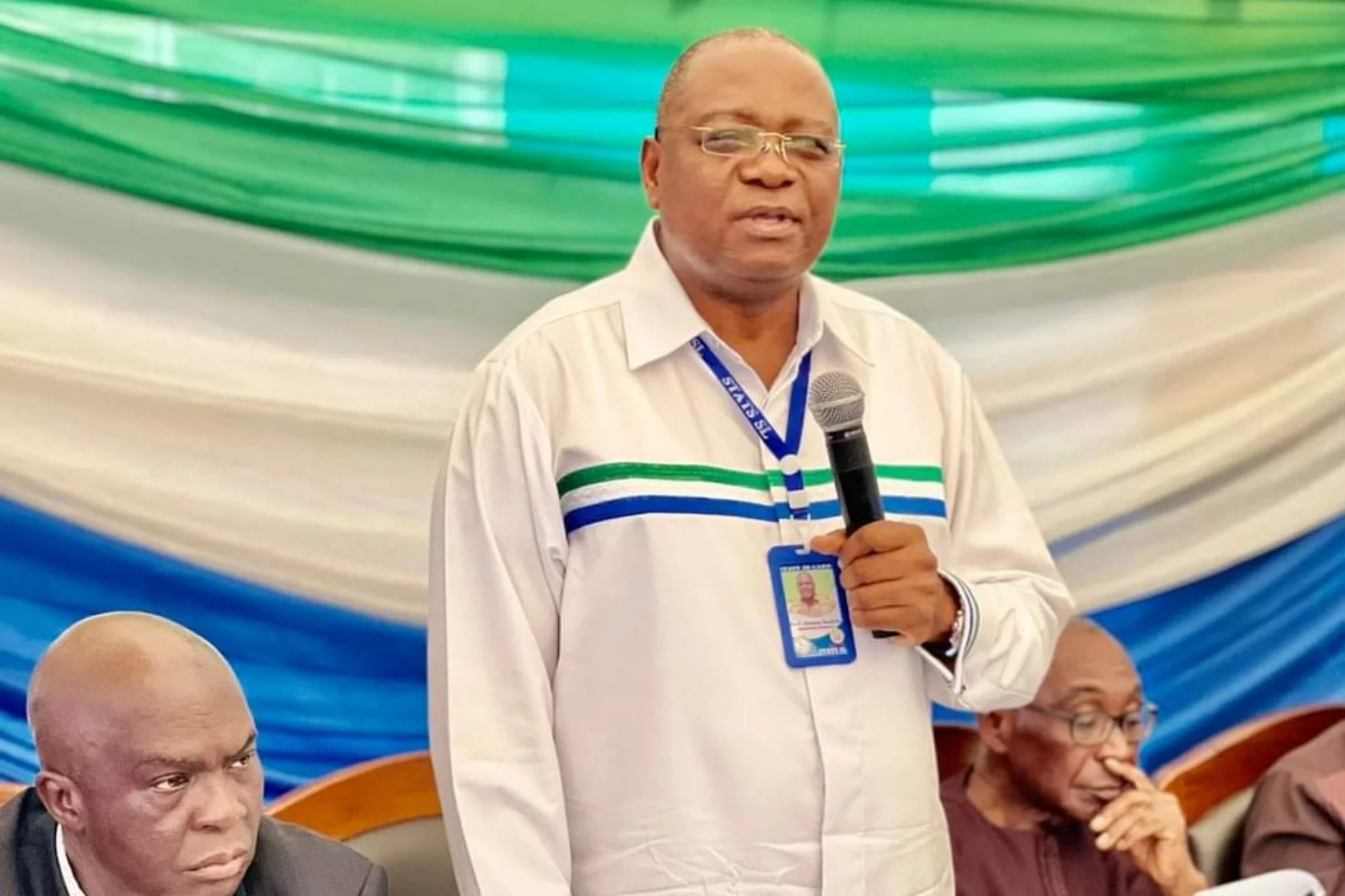The Chief Census Officer, who doubles as the Statistician-General, of Statistics Sierra Leone (Stats-SL) Prof. Osman Sankoh has stated that the just announced provisional Mid-term Population and Housing Census results would assist the government in identifying the social and economic status of citizens in the country.
Prof. Sankoh made this statement at the official announcement of the provisional results of the census at Stats SL office in Freetown.
According to the Statistician-General, they now have a reliable sampling frame to support all important socio-economic surveys for local and national development planning purposes, adding that henceforth they will be able to provide Locality, Ward, Section, Chiefdom, District and Regional level population data that can be generated in a timely manner.
“We wish to emphasise that before the Mid-Term Census was conducted, Stats SL was most of the time unable to provide data to development partners and other institutions requesting specific area-based population data,” Prof. Sankoh said.
“Today, the results of our digital cartography and digital enumeration will provide answers,” he added.

He said the results would assist government to identify the social and economic status of the citizens in the country.
“This will help government to devise interventions necessary to leapfrog the vulnerable in our society from their current socio-economic status”, Sankoh noted..
The SG stressed that everyone in Sierra Leone was counted where he or she slept on the Census Night of December 9th, adding that the population reported was the “census night population”, where people slept on that night, whether or not those were their usual places of residence.
“It is an established fact that for various reasons, people move to their home towns and villages to be counted there. We call this phenomenon the influential one night in-country census migration”, he explained.
Prof. Sankoh announced the provisional results providing the total population figures by sex at the District and Regional levels, stating that the population of Sierra Leone from the 2021 Mid-Term Population and Housing Census was 7,541,641 with 3,716,263 males and 3,825,378 making a sex ratio of 0.97 in favour of females.
He said the result also shows a total increase in the population from 2015 to 2021 of 449,528 which is 6% more than the 2015 population.
On his part, the Development Secretary, Peter Sam-Kpakra explained the role of the Ministry of Planning and Economic Development, particularly the Current Minister, Dr. Francis Kai-Kai and his predecessor Nabeela Tunis for their exceptional support provided to Stats SL during the period the census lasted.
He said the Census would provide a baseline data that would continue to serve as a reference point for Sierra Leone’s development trajectories.
Mona Korsgard, Chief of Evidence, Policy and Social Protection for UNICEF Sierra Leone, in her statement, said UNICEF was pleased to support the Census process, noting that it would be important for all to use the data for policy making, planning and programming to better reach the population with social services such as health, education, and sustainable jobs for young people who enter the labour market.

The Executive Director of Accountability Sierra Leone, William Sao-Lamin said as civil society they believed that, any development activity should be informed by a credible and reliable data that would help to hold duty bearers accountable if there are any defaults.
He appealed to all development partners, Ministries Department and Agencies to always call on StatsSL for reliable data of any development activity they may want to carry out in any community in the country.
The 2021 MTPHC is Sierra Leone’s first fully digital census which used technology to capture data at real-time; the process also ensures quality data monitoring, facilitates faster data processing and faster release of the census data.



 Post a comment
Post a comment








